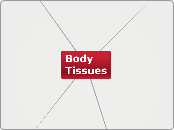par Cody Smith Il y a 13 années
13188
Body Tissue Concept Map

par Cody Smith Il y a 13 années
13188

Plus de détails
Secretes and reabsorbs water and small molecules and lines kidney tubules and glands, looks like cubes
Exchanges gases and found in the lungs, flat like a pancake
Absorbs nutrients, produces mucus and lines most digestive organs, looks like columns
Secretes water and ions and lines ducts of sweat glands, looks like cubes
Protects against abrasion and is found in outer layer of skin, mouth, vagina, flat like a pancake
Secretes mucus and lines the epididymus, mammary glands, larynx, looks like columns
It stores fat in the form of energy. It is found in everything including beneath the skin, around joints, padding the kidneys and other internal organs.
It is rigid connective tissue that provides a supportive framework. It lacks a vascular system so it heals slowly. It is found in the ends of bones and in the ear.
It's the most rigid connective tissue, with deposits of mineral salts and collagen within the matrix. Supports body and forms muscle attachments and the site for blood cell formation. It is found everywhere in your body.
It is composed of cells and suspended in a liquid matrix called plasma. Produced in red marrow. Transports substances throughout the body. It is found everywhere in your body.
It forms delicate, thin membranes throughout the body that bind body parts together such as skin and underlying organs. It is found throughout the body.
It consists of densely packed collagenous fibers and is very strong but lacks a good blood supply. It is part of tendons, ligaments, and aponeuroses (very flat tendon).
It surrounds internal organs that can expand and contract internal organs. It is found in the stomach, lungs, intestines and bladder.
It allows you to filter blood cells. It surrounds lymph nodes and the spleen.